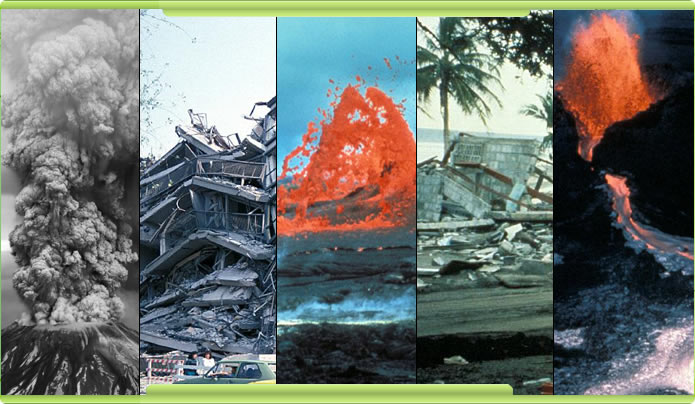Slip, Slide, & Collide
|
Red-hot lava and plumes of ash spew out of a volcano in the Philippines. An undersea earthquake in the Indian Ocean spawns a tsunami that crashes into Indonesia. The Himalayan Mountains grow taller every year.
Many of the most dramatic geological phenomena we experience on Earth — volcanic eruptions, earthquakes, tsunamis, and more — are caused by the slipping, sliding, and colliding of tectonic plates.
|
 |
As you might expect by now, most major geologic events occur at the boundaries between tectonic plates, where huge, massive pieces of the earth's crust interact. Each kind of plate boundary is associated with particular events, so if you know about the movements taking place at a plate boundary, you can often predict what's likely to occur there — volcanoes, earthquakes, mountains, trenches — in the future!
 See what happens at different plate boundariesSee what happens at different plate boundaries See what happens at different plate boundariesSee what happens at different plate boundaries
Photo credits: Mount St. Helens eruption, courtesy USGS/Cascades Volcano Observatory, photo by Robert Krimmel; Mexico City, Mexico earthquake, copyright © Oklahoma University; Kilauea Volcano, courtesy USGS Hawaiian Volcano Observatory; tsunami damage at El Tranisto, Nicaragua,National Oceanic and Atmospheric Administration; Kilauea Volcano, courtesy USGS Hawaiian Volcano Observatory
|
|
|